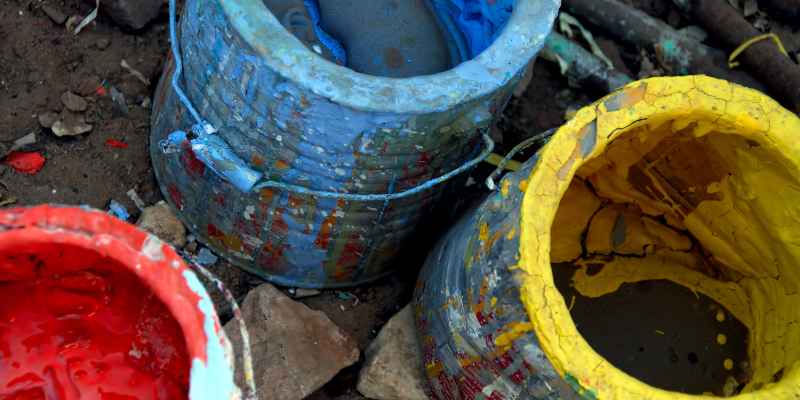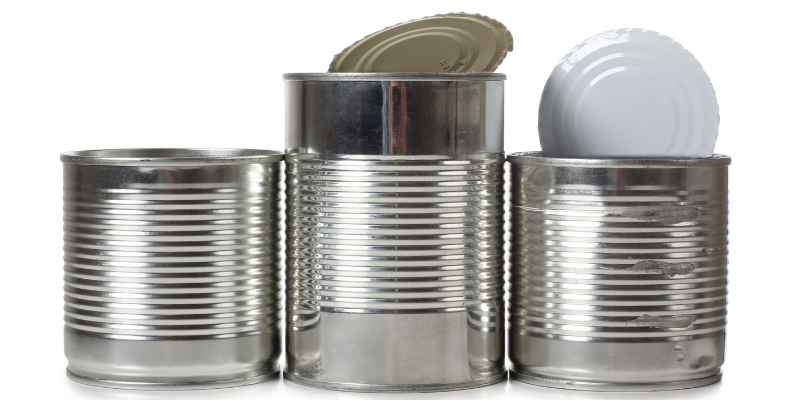Yes, you can use Drylok on wood surfaces for waterproofing and protection against moisture. Drylok can be applied to wood surfaces such as basements, outdoor furniture, and decks to create a waterproof barrier that prevents damage from moisture.
By applying Drylok, you can enhance the longevity of your wooden structures and prevent issues like rotting and warping. It is important to properly prepare the wood surface by cleaning and priming it before applying Drylok for best results. Additionally, make sure to follow the manufacturer’s instructions and safety guidelines when using this product on wood.
Overall, using Drylok on wood can help maintain the integrity and durability of your wooden surfaces for years to come.
What Is Drylok?
Drylok is a waterproofer often used on concrete, but it can also be used on wood. To use Drylok on wood, ensure the surface is clean and dry, then apply a coat of the product using a brush or roller for effective protection against moisture and mildew.
Drylok is a water-based waterproofing paint that is typically used on concrete surfaces to prevent water penetration. It creates a barrier that stops water from seeping through walls and floors, protecting the underlying structure.
Ultimate Waterproofing Solution
Drylok is hailed as the ultimate solution for waterproofing basements and other concrete surfaces. Its durable formula provides long-lasting protection against moisture and water damage.
Common Applications
Drylok can be used on various surfaces, including concrete, brick, stucco, and even wood. It is commonly applied to basement walls, foundation walls, and other below-grade surfaces to prevent water infiltration.
Key Benefits:
– Provides a seamless waterproof barrier
– Resists mildew and mold growth
– Easy to apply with a brush or roller
Whether you are dealing with a leaky basement or looking to protect your outdoor wood structures, Drylok offers a reliable solution for keeping water at bay.
Applying Drylok On Wood
You can use Drylok on wood to create a moisture-resistant barrier. Applying Drylok on wood helps to prevent water damage and protect the surface from moisture. It’s an effective solution for sealing and safeguarding wood surfaces against the elements.
When it comes to protecting wood surfaces, Drylok is a popular choice known for its exceptional waterproofing and moisture-resistant properties. While Drylok is commonly used on concrete and masonry, many people wonder if it is suitable for application on wood as well. In this article, we will explore the process of applying Drylok on wood, including the essential steps for surface preparation and application.
Surface Preparation
If you plan to apply Drylok on wood, proper surface preparation is crucial for optimal results. Follow these steps to ensure a clean and well-prepared surface:
- Thoroughly clean the wood surface using a mild detergent and water to remove any dirt, dust, or debris.
- Inspect the wood for any cracks, loose or peeling paint, or previous water damage. Repair any of these issues before proceeding.
- If there are any mold or mildew spots, treat them using a specialized cleaner or a mixture of bleach and water.
- Allow the wood to dry completely before moving on to the application steps.
Application Steps
Now that the wood surface is properly prepared, it’s time to apply Drylok. Follow these steps for a successful application:
- Stir the Drylok thoroughly before use to ensure a consistent and smooth texture.
- Using a brush or roller, apply the first coat of Drylok onto the wood surface, making sure to cover the entire area.
- Allow the first coat to dry completely. This usually takes around 2-4 hours, but refer to the instructions on the Drylok container for precise drying times.
- Once the first coat is dry, apply a second coat of Drylok to the wood surface. This ensures enhanced protection and durability.
- Allow the second coat to dry completely, which may take up to 24 hours depending on the humidity and temperature conditions.
- Inspect the dried Drylok surface for any missed spots or areas that require touch-ups. Apply additional coats as necessary.
By following these surface preparation and application steps, you can effectively use Drylok on wood to provide a protective barrier against moisture, water damage, and other potential hazards. Remember to read and follow the instructions provided by the manufacturer for the best results.
Effectiveness On Wood
Drylok can be used on wood surfaces to provide protection against moisture and create a durable barrier. Its effectiveness on wood helps prevent rot and decay, making it a suitable option for sealing and waterproofing wood structures.
Effectiveness on WoodDrylok is a game-changer. Its unique formula and waterproofing properties make it an ideal choice for various applications, including concrete and masonry. But what about wood? Can you use Drylok on wood, and if so, how effective is it? In this section, we explore the durability of Drylok on wood and its ability to provide protection against moisture and mold.
Durability
Drylok is known for its exceptional durability, and this holds true even when applied to wood surfaces. Its sturdy and long-lasting performance ensures that the wood remains protected for an extended period. Whether you are dealing with outdoor wooden furniture, decks, or even interior wood surfaces prone to moisture, Drylok stands strong as an effective solution. By forming a protective barrier, it prevents water from penetrating the wood, thereby reducing the chances of rot and decay.
Protection Against Moisture And Mold
Wood is highly susceptible to damage caused by moisture and mold growth, but with Drylok, you can combat these issues effectively. Its waterproofing properties create a seal that prevents water from being absorbed into the wood, keeping it dry and free from potential damage. By minimizing moisture infiltration, Drylok reduces the likelihood of mold growth, which can be both unsightly and harmful to your health.
Drylok’s ability to resist moisture and mold makes it an excellent choice for areas prone to dampness, such as basements and crawl spaces. By applying Drylok to wooden surfaces in these areas, you can significantly reduce the risk of mold infestation while providing a protective barrier against moisture.
In addition to its waterproofing capabilities, Drylok also helps in preventing efflorescence. Efflorescence is a white, powdery substance that can form on the surface of wood due to the presence of moisture. By using Drylok, you can keep efflorescence at bay and maintain the aesthetic appeal of your wooden surfaces.
To ensure maximum effectiveness, proper application and preparation are key. Make sure to clean the wood thoroughly and remove any existing mold or mildew before applying Drylok. Additionally, consider sanding the wood to create a smoother surface for better adhesion. Always follow the manufacturer’s instructions for the best results.
In conclusion, Drylok can indeed be used on wood surfaces, effectively providing durability, protection against moisture, mold, and even efflorescence. Whether you have wooden decks, furniture, or other interior or exterior wood surfaces, Drylok’s waterproofing properties can help ensure their longevity and maintain their overall quality. So if you are looking for an efficient way to safeguard your wooden structures, consider using Drylok and experience the benefits for yourself.
Comparing With Other Wood Sealers
Drylok is not suitable for wood surfaces as it is primarily designed for masonry materials. Using drylok on wood may not provide the same level of protection and durability as other wood sealers. Consider using a wood-specific sealer for optimal results.
Drylok Vs. Traditional Wood Sealers
Drylok: Effective for wood waterproofing, while traditional sealers may not provide the same level of water resistance.
Traditional Sealers: May require multiple coats and reapplications compared to Drylok’s one-coat application.
Advantages Of Using Drylok
- One-coat application saves time and effort
- Superior water resistance compared to traditional sealers
- Effective on various wood types, offering versatility
- Can be used on damp wood, providing convenience
Potential Limitations

Incompatibility With Certain Wood Types
Drylok, though effective on masonry, may not bond well with certain wood types like exotic or oily woods.
Long-term Performance
While Drylok provides temporary protection on wood, long-term performance may vary depending on exposure.
Project Considerations
When taking on a DIY project involving wood surfaces, it’s essential to consider a few factors before deciding whether to use Drylok. Depending on whether the wood is indoors or outdoors, different considerations come into play. We’ll explore these considerations for both indoor and outdoor wood surfaces below.
Indoor Wood Surfaces
When it comes to indoor wood surfaces, using Drylok may offer several benefits. It is a versatile product that can be used on various surfaces, including walls, floors, and even furniture. By using Drylok on indoor wooden surfaces, it helps protect against moisture, which can cause warping, rotting, or even mold growth.
Moreover, Drylok creates a protective barrier that prevents water penetration and enhances the durability of the wood. It also blocks the growth of mildew and helps maintain a clean and healthy indoor environment.
Before applying Drylok on indoor wood surfaces, it is crucial to prepare the wood properly. Sanding the surface smooth and removing any existing paint or finish ensures better adhesion of the product. Additionally, cleaning the surface thoroughly eliminates any dust or debris that may hinder the effectiveness of the Drylok.
Once the surface is ready, applying Drylok with a brush or roller in thin, even coats is recommended. Multiple coats may be necessary, especially if the wood is porous or prone to moisture absorption.
Outdoor Wood Surfaces
When it’s time to protect outdoor wood surfaces like decks, fences, or pergolas, considering Drylok is a wise choice. Drylok is designed to withstand the harsh outdoor elements and provide long-lasting protection to the wood.
By applying Drylok, you can shield outdoor wooden surfaces from moisture, preventing issues like rotting, cracking, or warping due to exposure to rain, snow, or humidity. This can significantly extend the lifespan of the wood and reduce the need for frequent maintenance and repairs.
Before using Drylok on outdoor wood surfaces, it is crucial to prepare the wood appropriately. Start by cleaning the surface thoroughly and removing any existing stains, paints, or sealants. This ensures that the Drylok adheres properly and effectively seals the wood.
Applying Drylok on outdoor wood surfaces requires a similar process as indoor surfaces. Use a brush or roller to apply thin coats, waiting for each coat to dry before applying the next. Multiple coats may be necessary, especially for surfaces exposed to excessive moisture or those that require additional protection.
In summary, whether you are working on indoor or outdoor wood surfaces, Drylok can be an excellent choice to protect against moisture-related damage. Proper preparation and application are key to ensure the product’s effectiveness and maximize the durability of the wood surface.
Expert Recommendations
Professional Insights
Best Practices For Applying Drylok On Wood
Drylok on wood requires careful attention to detail – Consult with professionals for guidance.
Best Practices for Applying Drylok on Wood:
- Ensure wood is clean and dry before application.
- Use a quality brush or roller for even coverage.
- Apply multiple thin coats for optimal protection.
- Allow proper drying time between coats.
- Follow manufacturer instructions for best results.
Conclusion And Final Verdict

If you’re considering using Drylok on wood, it’s important to weigh the benefits and considerations before making a decision. To help you make an informed choice, let’s summarize the key benefits and considerations.
Drylok is a popular waterproofing product known for its effectiveness on masonry surfaces. However, it can also be used on wood in certain situations. Here are some key benefits of using Drylok on wood:
- Waterproofing: Drylok creates a barrier against water, preventing moisture from seeping into the wood.
- Protection against rot and decay: By keeping the wood dry, Drylok helps to prevent rot and decay from occurring.
- Improved durability: The waterproofing properties of Drylok can increase the lifespan of the wood, making it more resistant to wear and tear.
- Easy application: Drylok is relatively easy to apply and doesn’t require any special tools or equipment.
While Drylok offers several benefits when used on wood, there are a few important considerations to keep in mind:
- Surface preparation: Proper surface preparation is crucial for the effectiveness of Drylok. It’s important to clean, dry, and remove any existing coatings or sealants from the wood before applying Drylok.
- Type of wood: Drylok is best suited for exterior wood surfaces that are subject to weather exposure. It may not be as effective on interior wood or highly porous wood types.
- Compatibility: It’s essential to check the compatibility of Drylok with any existing coatings or finishes on the wood. Some products may not adhere well or may cause adverse reactions.
- Application limitations: Drylok is typically recommended for vertical surfaces such as walls and foundations. It may not be suitable for horizontal surfaces like decks or floors, as it may cause slipping hazards.
In conclusion, using Drylok on wood can provide effective waterproofing and protection against rot and decay. However, it’s important to consider the surface preparation, wood type, compatibility, and application limitations before proceeding. By carefully evaluating these factors, you can determine whether Drylok is the right choice for your specific wood surface. Remember, proper application and adherence to manufacturer guidelines are crucial for optimal results.
Frequently Asked Questions Of Can You Use Drylok On Wood
What Can You Use Drylok On?
DRYLOK can be used on a variety of surfaces like basement walls, concrete floors, masonry, and brick. It provides a waterproof barrier that helps prevent water penetration and keeps your space dry.
What Are The Disadvantages Of Drylok?
Some disadvantages of DRYLOK include limited color options, potential for peeling or bubbling, and application challenges on already painted surfaces.
Can You Put Paint Over Drylok?
Yes, you can paint over DRYLOK. It’s important to clean the surface thoroughly and allow DRYLOK to cure for at least 24 hours before painting. Use a quality latex paint and apply it smoothly for best results.
Can You Use Drylok On Exterior Walls?
Yes, DRYLOK can be used on exterior walls to provide waterproofing and protection against moisture.
Conclusion
Can Drylok be used on wood? Yes, it offers protection against moisture and mold. Remember to follow application instructions for best results. Consider prepping the wood surface beforehand to ensure proper adhesion. Whether it’s for basements or outdoor projects, Drylok can be a reliable solution.


